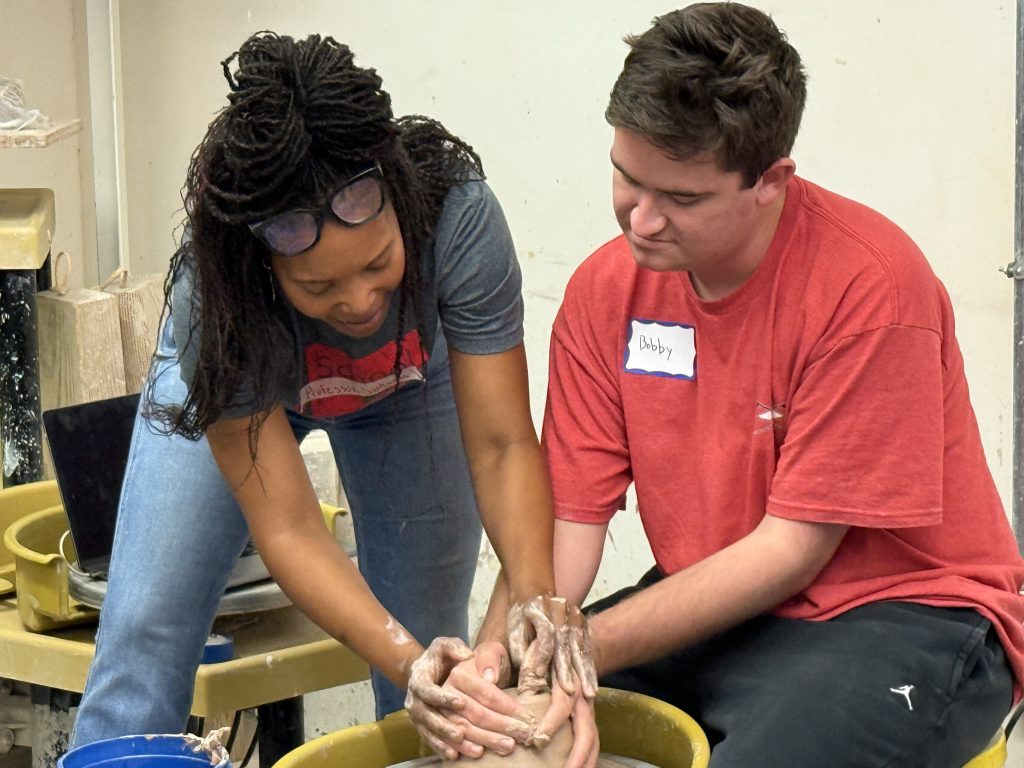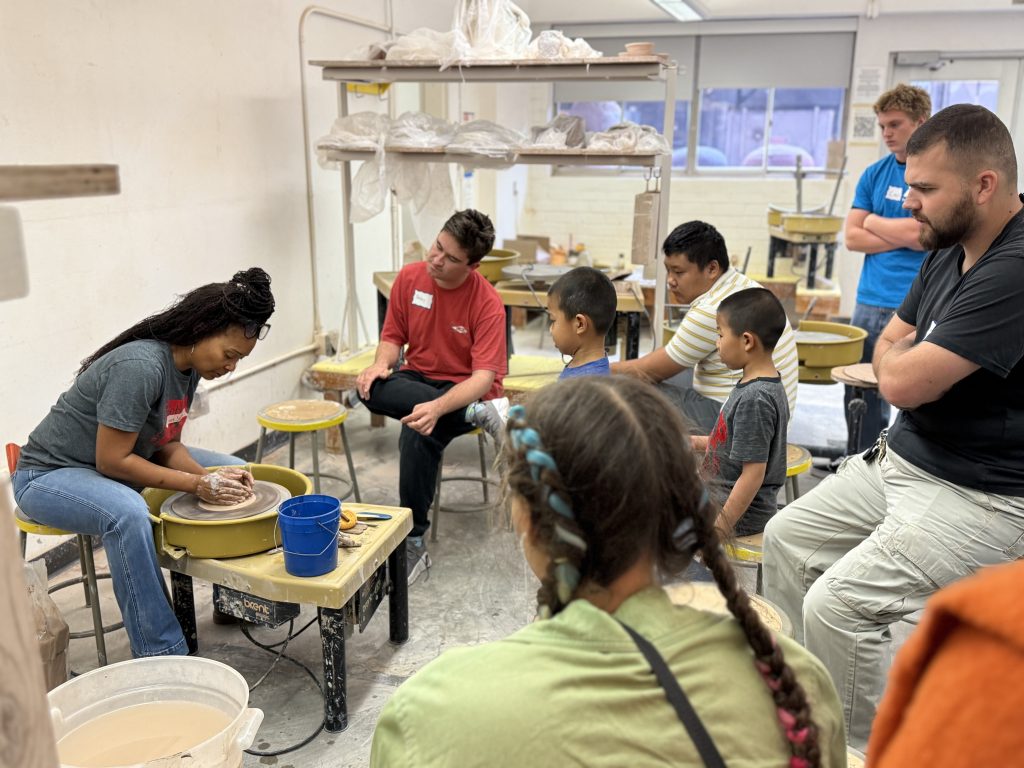
Though his small hands could hardly hold the massive lump of clay, the smile on the face of seven-year-old Jingran Cheng made it obvious his first time seeing a plate being made was a mind-altering event.
Alistair Wu and several members of the Peer 1 on 1, Beach Cities Chapter, hosted the event on Saturday at Cal State Long Beach. Kids and young adults on the spectrum had a once-in-a-lifetime chance to sit at a real potter’s wheel and create whatever they could make of their little mound of clay.
Entitled “Ceramics Therapeutic Exploration,” the event was billed as “a free event for neurodiverse kids and youth to engage in play, discovery, and healing through hands-on making of clay.”

Peer 1 and 1 is a support group powered by high school students from regional high schools who have banded together to create good in the world.
“I enjoy the events and activities partly because they are effective ways to connect with people. I am passionate about sharing activities I enjoy, and my vision for the Beach Cities branch is to plan and host activities that create opportunities for social inclusion between neurotypical and neurodiverse communities,” he said.
Wu, the group’s president, attends Oxford Academy, while Albert Chen, the Treasurer, attends Whitney High, and Owen Bawek Garcia, the group’s public relations director, is a Water Polo Junior Olympian who attends Los Alamitos High School.
Wu said when the opportunity for a potential visit to a ceramics studio was first announced, “it was so popular, we had to stop advertising it,” adding that the potential visit to the ceramics lab “made it easy to recruit volunteers as well.
Wu and his group were at the Fine Arts Building on East Campus Drive on Saturday to host the first-ever event.
Professor Tia Santana, a certified ceramics expert, fired up her pottery wheel, slapped a wet mound of clay on the spinning disk, and went through a 20-minute explanation and demonstration for the group, explaining how the pottery wheel worked and how the clay would eventually become a dish.

As she spoke, the kids peppered her with questions, which she answered, smiled, and kept spinning the potter’s wheel, using the putty tool in her right hand to target the spinning mound of clay precisely. Suddenly, a beautiful bowl began to emerge.
“I have a background in working with these communities,” said Santana in an interview with ENE after the event. “For me, engaging a community is like the most therapeutic thing I can do.”
Everyone, especially the young ones, held on to every word as Santana described why she continued to wet the clay, explaining the process that water itself played in actually forming plates and bowls, moving her hands slowly to create a lip of the bowl she was making.
Professor Santana said she agreed when asked to host the session because “it’s my joy,” she said. “It’s where I find my joy (working with these young people).
“It reminds me of my time with my kids when they were small. I like my work, but during all of those moments when my kids had an opportunity to come into the studio and do things, that’s where the joy was,” she said.

After she thoroughly explains the Potter’s Wheel, the group moves to a different part of the lab where everyone participating suddenly gets their own chunk of wet clay to shape in any form they choose.
When Jingran Cheng got his chance to sit at the Potter’s Wheel, his eyes got almost too large for the large glasses he was wearing.
Professor Santana gingerly stepped around him, ever-so-slightly moving the young boy into a safe position before turning on the potter’s wheel and watching him create. “There are no wrong answers,” when molding with the clay, she said.
Santana hosted the group of children and young adults at the ceramics lab in the Fine Arts Building at Cal State Long Beach on Saturday.
“They can create whatever they want to create,” she said, before walking off to visit with yet another group of students at one of several tables within the lab.
“You are making something,” she told the students, “and it doesn’t have to be representative. It doesn’t have to be something that’s a thing. It’s just the fact that you’re just able to make it, the fact that you made it… You touched it, you manipulated it. There’s no wrong answer here,” she said.
In addition to Professor Santana, several volunteers from the CalState lab were also there to answer technical questions and help the neurodiverse students make something with their clay.
“This opportunity is so popular that we will try to do it twice a year,” said Wu on Saturday. Professor Santana said she and her team would be interested in supporting a twice-a-year visit to open the opportunity to more neurodiverse participants.
“My heart and my joy are in community services and building community programs in clay in museums and schools,” she said.
“I’ve been doing that for the past two decades, and I’m ready to continue,” said Santana.
While Wu said there were mostly Asian students in this group, he said the Beach Cities Chapter of Peer 1 on 1 had recently held a “Hispanic Heritage” event and had also started hosting Pickleball games as Peer 1 on 1 expands its activities.
Yuping Mao, a parental advisor to the group, said the event’s success and demand from other youth will likely result in at least one more session and likely be considered as an ongoing experience for neurodiverse youth.
“Ceramic therapeutic exploration is in big demand,” she said.